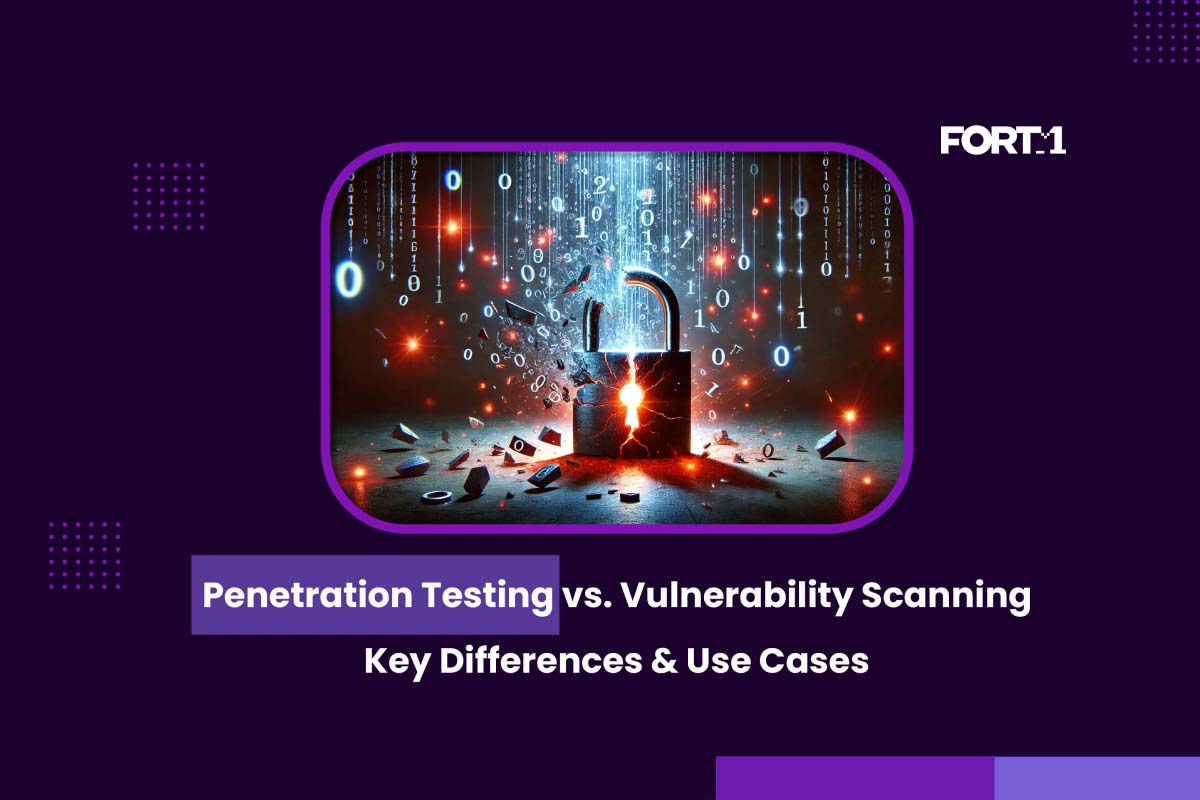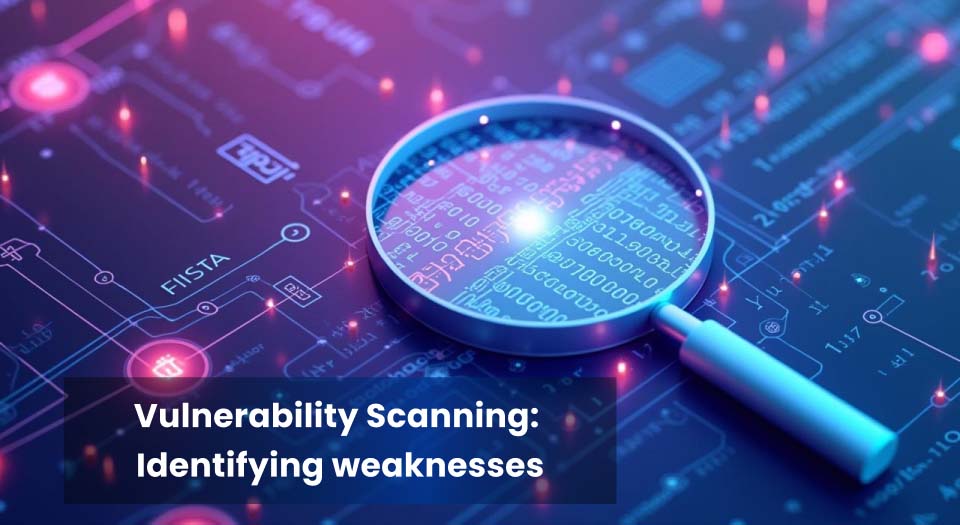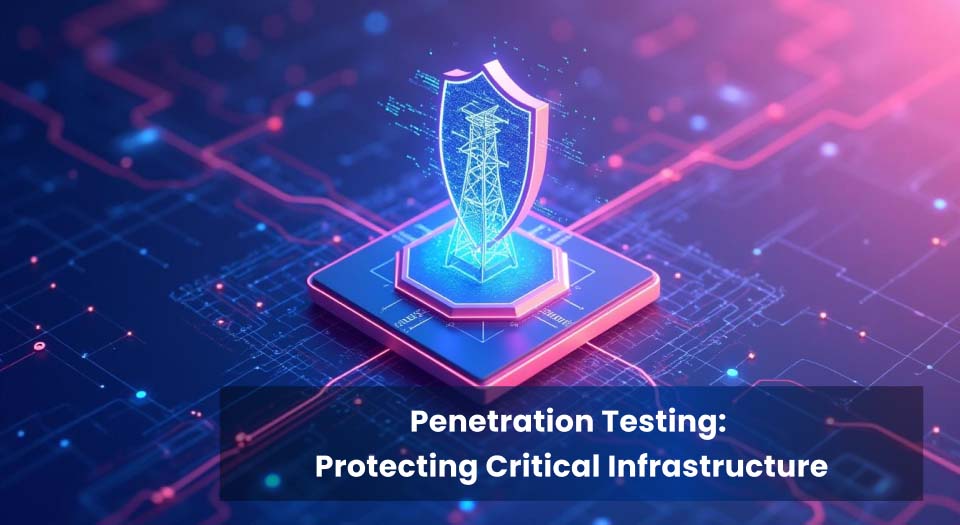




Effective cybersecurity practices require organisations to identify and mitigate vulnerabilities within their digital infrastructure. Two key methods often employed are penetration testing and vulnerability scanning. While these techniques share a common goal—enhancing security—they differ significantly in methodology, scope, and outcomes. Penetration testing simulates real-world cyberattacks to uncover exploitable weaknesses, whereas vulnerability scanning uses automated tools to identify and classify potential security gaps.
Despite these distinctions, many businesses mistakenly view penetration testing and vulnerability scanning as interchangeable. This confusion can lead to suboptimal security strategies, where organisations might rely solely on one approach, leaving critical risks unaddressed. A 2023 study by Cybersecurity Ventures revealed that 43% of small and medium-sized enterprises in Australia experienced cyberattacks due to unpatched vulnerabilities—a risk that vulnerability scanning can identify but penetration testing can validate and exploit.
This article aims to demystify the key differences between penetration testing and vulnerability scanning, offering clear insights into their respective methodologies, goals, and practical applications. By understanding these distinctions, businesses can make informed decisions to strengthen their cybersecurity posture and allocate resources more effectively.
Penetration testing, often referred to as pen testing, is a proactive approach to assessing an organisation’s cybersecurity resilience. Its primary objective is to simulate real-world attacks on systems, networks, or applications to identify vulnerabilities that could be exploited by malicious actors. Unlike vulnerability scanning, which focuses on cataloguing potential security gaps, penetration testing evaluates the exploitability and real-world impact of these vulnerabilities.
The methodology of penetration testing follows a structured process comprising three key phases:
Penetration testing is essential in scenarios where the stakes of a breach are high. For instance, organisations handling sensitive data, such as financial institutions or healthcare providers, rely on penetration testing to ensure their systems can withstand sophisticated attacks. It is also indispensable for businesses seeking compliance with standards like the Australian Signals Directorate’s (ASD) Essential Eight or ISO 27001.
For detailed guidance on penetration testing methodologies, refer to the Australian Cyber Security Centre (ACSC) at cyber.gov.au. This resource offers valuable insights into best practices and standards for penetration testing in Australia.
By understanding penetration testing’s phases and use cases, businesses can prioritise actionable defence strategies to mitigate security risks effectively.

Vulnerability scanning is a systematic process that identifies potential security weaknesses within an organisation’s digital environment. Unlike penetration testing, which simulates active attacks, vulnerability scanning focuses on detecting and cataloguing vulnerabilities in systems, networks, and applications. Its primary goal is to provide organisations with a comprehensive inventory of known risks, enabling prioritised remediation.
Automated tools are the cornerstone of vulnerability scanning, offering the ability to assess large-scale environments quickly and efficiently. These tools leverage extensive databases of known vulnerabilities, such as the Common Vulnerabilities and Exposures (CVE) list, to identify gaps in an organisation’s defences. However, while automation ensures speed and consistency, manual validation is often necessary to reduce false positives and ensure the context-specific relevance of findings.
Vulnerability scanning is widely used for routine security checks and compliance with regulatory standards, such as ISO 27001 or PCI DSS. For instance, an organisation preparing for an audit may use scanning tools to ensure all systems are updated and compliant. Additionally, regular scans help monitor emerging threats, ensuring that outdated software or misconfigurations are addressed promptly.
| Tool | Key Features | Strengths | Limitations |
|---|---|---|---|
| Nessus | Extensive plugin library, compliance checks | Highly customisable, user-friendly interface | Requires licensing for full functionality |
| OpenVAS | Open-source, regular updates | Cost-effective, suitable for smaller organisations | Can be resource-intensive |
| Qualys | Cloud-based, real-time monitoring | Scalable, detailed reporting | Higher cost for advanced features |
By incorporating vulnerability scanning into their cybersecurity strategy, organisations can proactively address risks, enhance compliance efforts, and maintain an ongoing awareness of their security posture.
While both penetration testing and vulnerability scanning are integral to a comprehensive cybersecurity strategy, they serve distinct purposes and employ different methodologies. Misunderstanding these differences can lead to ineffective allocation of security resources.
Penetration testing involves simulating a real-world attack on an organisation’s systems, networks, or applications to uncover exploitable vulnerabilities. It requires extensive manual effort, strategic thinking, and deep technical expertise to mimic the tactics of malicious actors. Vulnerability scanning, by contrast, is predominantly automated, relying on pre-defined scripts to identify and catalogue known vulnerabilities across the digital environment.
The primary goal of penetration testing is to demonstrate the potential real-world impact of security weaknesses, such as unauthorised data access or system compromise. Vulnerability scanning, on the other hand, focuses on broad risk identification, helping organisations create an inventory of weaknesses that need remediation. While penetration testing emphasises depth, vulnerability scanning prioritises breadth.
Penetration testing demands advanced technical skills and the ability to adapt to specific security challenges. Certified professionals, such as OSCP or CISSP holders, typically conduct these tests. Vulnerability scanning is less resource-intensive, often carried out by IT teams using automated tools with minimal configuration.
The depth of penetration testing enables it to uncover complex, context-specific vulnerabilities that scanning tools might overlook, such as chained exploits. Vulnerability scanning lacks this depth but excels at identifying a wide range of known issues efficiently.
Penetration testing provides actionable insights into how vulnerabilities could be exploited, enabling organisations to strengthen defences against specific threats. Vulnerability scanning delivers comprehensive reports highlighting areas of concern but does not delve into exploitability.
| Aspect | Penetration Testing | Vulnerability Scanning |
|---|---|---|
| Methodology | Manual, simulates real-world attacks | Automated, identifies known vulnerabilities |
| Goals | Assess real-world exploitability | Identify and catalogue vulnerabilities |
| Expertise Required | Advanced technical skills | Minimal technical knowledge |
| Depth of Analysis | In-depth, uncovers complex vulnerabilities | Broad, identifies a wide range of risks |
| Outcomes | Detailed insights into threat scenarios | Comprehensive vulnerability reports |
| Frequency | Periodic, often annually | Regular, often monthly |
| Cost | Higher due to manual effort | Lower due to automation |
Understanding these differences enables organisations to leverage penetration testing and vulnerability scanning effectively, ensuring a balanced and robust security posture. Both approaches are essential but serve different purposes in identifying, assessing, and mitigating risks.

One prominent use case is testing the resilience of critical infrastructure, such as energy grids, financial networks, or healthcare systems. These environments are frequent targets for sophisticated attacks, making it essential to identify exploitable vulnerabilities before malicious actors can exploit them. For example, a 2021 penetration test of a major Australian healthcare provider revealed weaknesses in their network segmentation, which, if exploited, could have compromised patient data and disrupted critical services.
Another common scenario involves incident response planning. Penetration tests can simulate attacks to evaluate an organisation’s ability to detect, respond to, and recover from breaches. For instance, a financial institution in Sydney used penetration testing to uncover flaws in their intrusion detection system, allowing them to improve response times and strengthen their overall security posture.
Penetration testing is also indispensable for organisations aiming to achieve compliance with standards such as ISO 27001 or APRA CPS 234 in Australia. These tests provide actionable insights that help businesses demonstrate robust security measures during audits.
By tailoring penetration testing to these scenarios, organisations can not only prevent data breaches but also foster trust among stakeholders by demonstrating proactive cybersecurity practices.
Penetration testing is a critical component of cybersecurity for organisations that must protect sensitive assets or comply with rigorous industry standards. Its applicability is particularly significant in scenarios requiring an in-depth assessment of potential threats and their impact.
Vulnerability scanning is an essential tool for organisations seeking to maintain a proactive approach to cybersecurity. It is particularly effective in scenarios requiring routine assessments, compliance validation, or foundational security measures.
One primary use case for vulnerability scanning is conducting monthly security audits. Automated scans provide an efficient method to identify and address new vulnerabilities introduced by system updates, software installations, or configuration changes. For instance, businesses with dynamic environments, such as retail chains or e-commerce platforms, can benefit from frequent scans to ensure their networks remain secure.
Another critical application is compliance with industry standards such as ISO 27001, PCI DSS, or APRA CPS 234. Vulnerability scans enable organisations to meet regulatory requirements by documenting potential risks and demonstrating ongoing remediation efforts. Financial and healthcare sectors, in particular, use scanning to ensure compliance with stringent security policies.
Vulnerability scanning is also ideal during the early stages of a security program, offering a cost-effective way to establish a baseline understanding of the organisation’s risk exposure. It helps prioritise immediate threats and informs future investments in more advanced security measures, such as penetration testing.
To integrate vulnerability scanning effectively, organisations should:
By incorporating vulnerability scanning into their cybersecurity strategies, businesses can build a foundation of robust defences, minimise risks, and streamline their path to compliance.
Distinguishing between penetration testing and vulnerability scanning is essential for any organisation seeking to enhance its cybersecurity framework. Vulnerability scanning offers a systematic approach to identifying and cataloguing potential weaknesses across systems, while penetration testing simulates real-world attacks to uncover vulnerabilities that could be actively exploited. Both methods serve distinct yet complementary purposes, making their integration a vital component of a robust security strategy.
By leveraging the strengths of both approaches, organisations can ensure a layered defence. Vulnerability scanning provides ongoing visibility into security gaps, enabling timely remediation and compliance with regulatory standards. Meanwhile, penetration testing delivers in-depth insights into exploitability, empowering businesses to address critical vulnerabilities effectively.
For tailored cybersecurity solutions, businesses should consider partnering with professional firms like FORT1. With expertise in penetration testing, vulnerability scanning, and comprehensive security assessments, FORT1 helps organisations secure their digital infrastructure. To learn more about how FORT1 can enhance your security strategy, contact us today or visit FORT1’s website.
Combining vulnerability scanning and penetration testing ensures a proactive approach to cybersecurity, reducing risk and building resilience against evolving threats. Partnering with a trusted cybersecurity provider amplifies these benefits, enabling organisations to focus on growth while safeguarding their assets.

Fort1 provides comprehensive cybersecurity solutions tailored to protect your business from evolving digital threats. With expertise in penetration testing, dark web monitoring, and managed detection services, we empower organisations to stay secure and resilient in the face of modern cyber challenges.
Copyright @2024 Fort1. All Rights Reserved by Fort1.